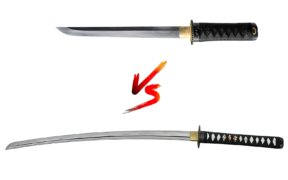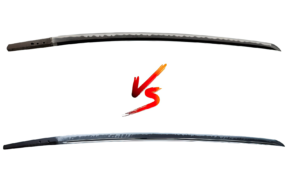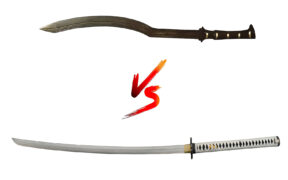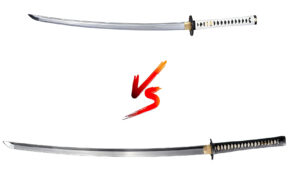Our content features commercial links to our products, committed to transparent, unbiased, and informed editorial recommendations. Learn More
What is the Difference Between a Katana and a Samurai Sword?
NO AI USED This Article has been written and edited by our team with no help of the AI
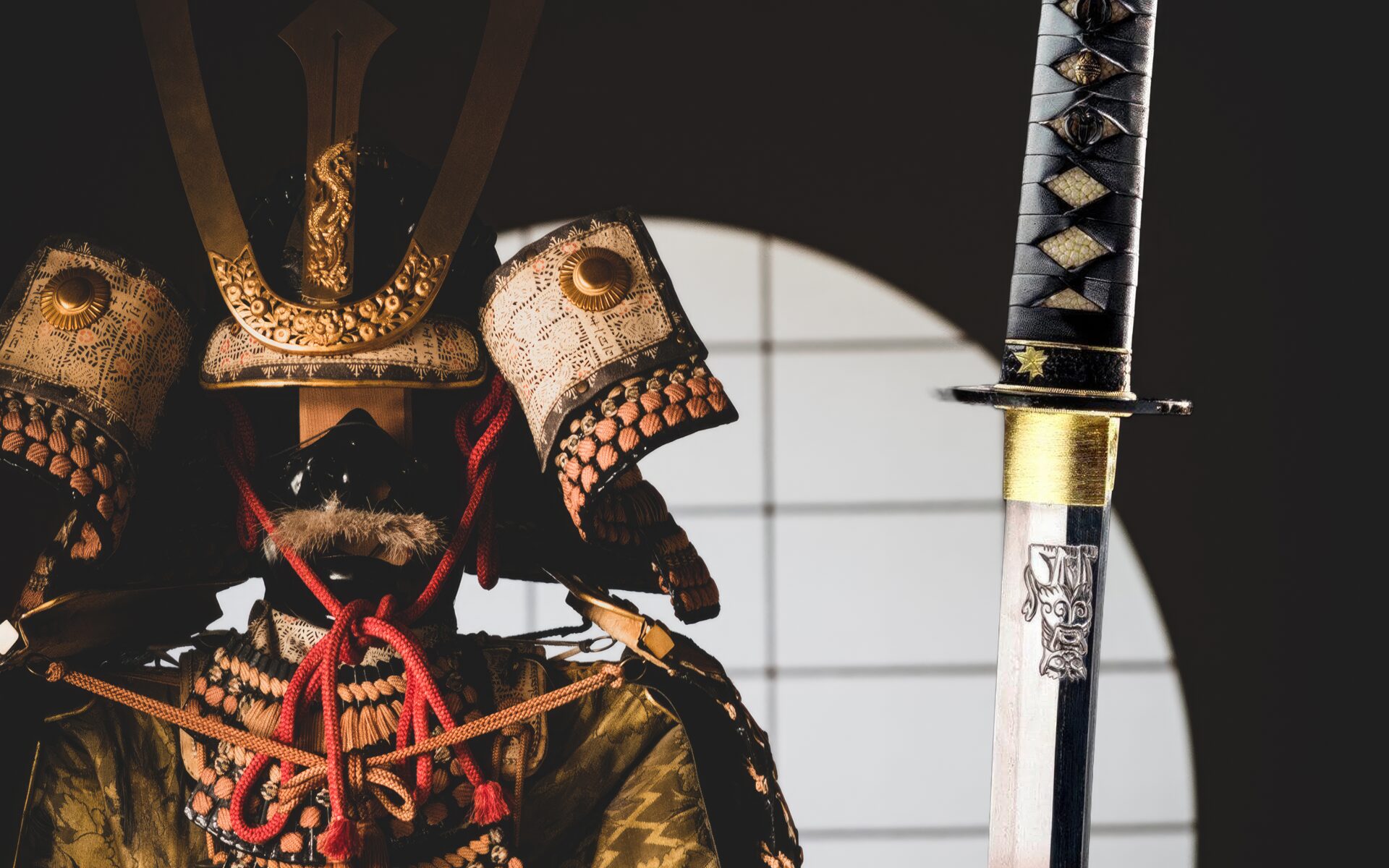
The samurai were the elite warrior class of Japan who trained excessively in the art of swordsmanship. One of the many swords they used was the katana. The sword of the samurai was central to their identity and represented their bushido warrior spirit, social status as well and honor on and off the battlefield.
In this article, we will separate the katana from the samurai along with the rest of their swords to better understand their differences. We will start by explaining the terminology behind the two and delve into the swords of the samurai and the difference in function, practice, status, and value from the katana.
Glossary Terms
| Term | Definition |
|---|---|
| Samurai | Japanese warrior class |
| Samurai swords | Japanese sword types used by the samurai |
| Katana | A single type of Japanese samurai sword |
What Swords Did the Samurai Use?
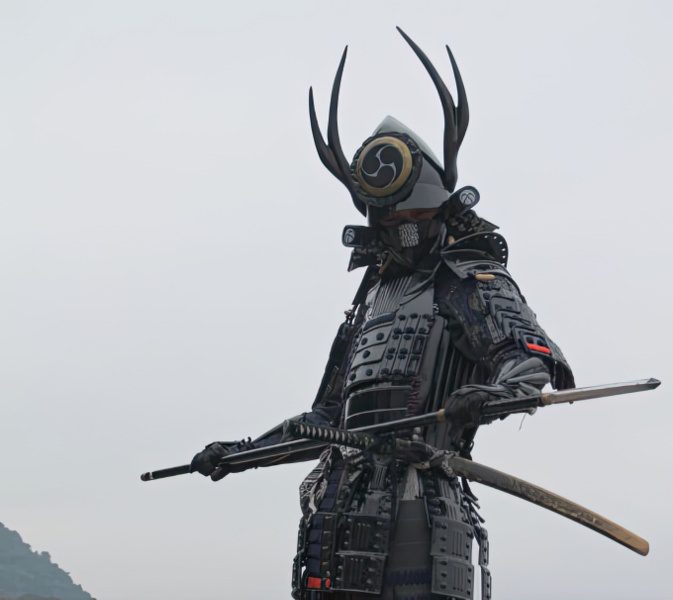
The samurai, celebrated for their bravery and unique bushido code, originated in 9th-century Japan as “bushi” or “saburai,” denoting loyal warriors from military families. Rising to prominence in the Kamakura Era, 12th century, they were versatile in combat, mastering polearms, cavalry, and archery. Notably, their skill in swordsmanship, particularly with their iconic swords, was revered, symbolizing their esteemed status in Japanese history.
Here are some of the most popular swords used by the samurai.
- Tachi – curved sword most commonly used with cavalry
- Koshigatana – smaller knife which was the predecessor of the tanto
- Kodachi – a smaller infantry type of tachi
- Odachi – a larger battlefield type of tachi
- Nagamaki – two-handed curved blade with a large handle for powerful slashes
- Uchigatana – an early version of the katana
- Tanto – small dagger worn on the waist or inside the samurai’s robes
- Wakizashi – a secondary shorter one-handed sword
- Katana – a two-handed, single-edged curved versatile sword
The different types and designs of the samurai sword came depending on the warfare used.
The odachi was a large two-handed battlefield sword that could be used as a polearm, and the nagamaki excelled against men on horseback. The curved tachi was the preferred cavalry sword, while the katana was the life-saving tool when all others fell short.
How is a Katana Different From Other Samurai Swords?
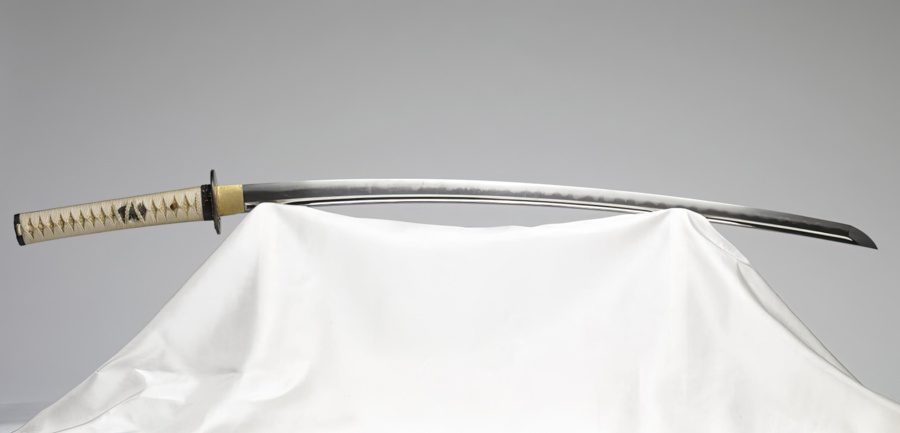
The katana is a Japanese single-edged curved two-handed sword in the samurai’s arsenal that was most popular after the 14th century. The other bladed-edged weapons used by the samurai warrior class were plainly called samurai swords. These swords were first used in the Heian Period (794-1185) and varied throughout the other eras depending on the current period’s need and function.
It is believed that the katana’s design was produced to compensate for the need for a shorter, more versatile blade to be used by the increasing infantry instead of the curved tachi used by cavalry.
The katana functioned differently from the other swords due to its design. The larger and more curved swords, like the nodachi, were popular on the battlefield. The smaller tanto or wakizashi swords were often carried alongside the katana or tachi in a pair called daisho. These could be used as a secondary weapon or ceremonial tool for a seppuku ritual, a time-honored samurai tradition where they took their own lives.
Katana swords are today known as “the” weapon of the samurai, but the samurai rarely used them in battle. Longer naginata blade polearms, tachi blades, yari spears, bows and arrows, and several types of rifles were their preferred weapons of choice. Despite that, every samurai carried a katana to be used as a last resort.
Katana Value vs. Other Samurai Swords
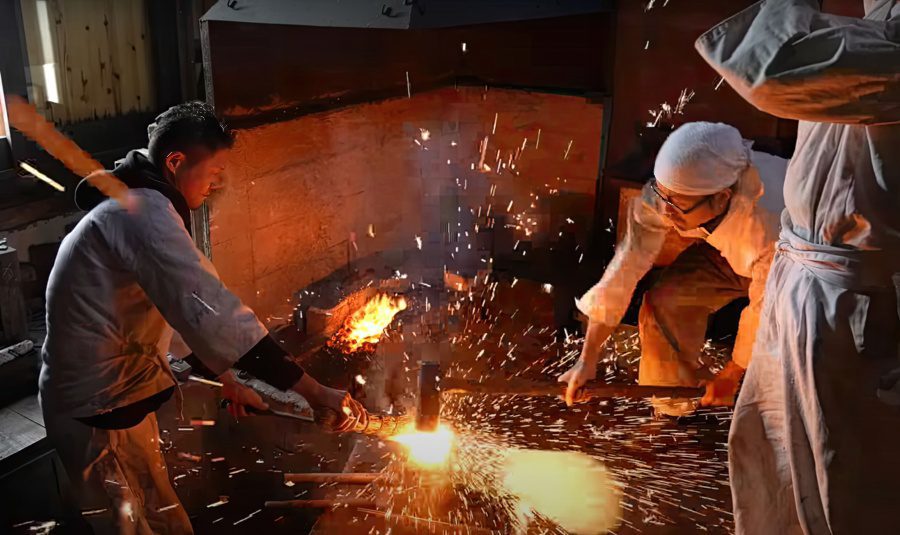
A large difference between the katana and other samurai swords today is their value. The katana is the most valued sword out of all other samurai swords that were essentially used for longer historical periods on the battlefield. Katana swords were frequently used as secondary samurai weapons of war during the chaotic Sengoku Jidai period (1467-1615) through the Tokugawa Shogunate period (1467-1603).
As combat and rebellions became less frequent during the peaceful Edo Period (1603-1867), the katana became the symbol and center of the samurai culture, serving as the main dress piece and an everyday tool used for dueling and practice. It was also interlinked with the bushido code lifestyle that encouraged self-discipline.
The intricate and meticulous art of making a quality katana with tamahagane steel depended on Japanese artisans. The spiritual connection that this last resort weapon had with the samurai could save their lives, making it more valued than other samurai swords.
Today, the making of the katana is an art in itself that still holds strong.
